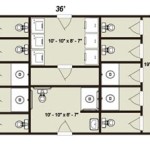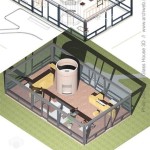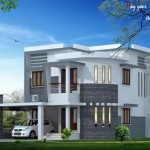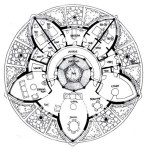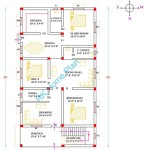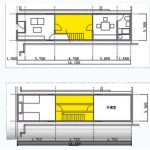Floor Plan Drawing Design
Floor plan drawing design represents a crucial initial step in any architectural or interior design project. It provides a visual representation of a building's layout, showing the relationship between rooms, spaces, and physical features. A well-designed floor plan optimizes space utilization, improves functionality, and enhances the overall aesthetic appeal of a structure.
Key Considerations in Floor Plan Design
Several important factors must be addressed during the floor plan design process. These considerations affect both the practicality and the visual harmony of the design.
- Room Size and Placement: Careful planning of room dimensions and placement is essential for creating a functional and comfortable living environment. Factors like natural light source, privacy requirements, and intended usage must be considered.
- Traffic Flow: Efficient traffic flow minimizes congestion and improves the overall usability of the space. The arrangement of hallways, doorways, and furniture must be carefully organized to ensure smooth movement within the building.
- Furniture Placement: The layout should account for the placement of furniture, ensuring enough space for comfortable movement and ensuring that furniture does not obstruct doorways or pathways.
- Natural Light and Ventilation: Maximizing natural light and ventilation improves both the health and the aesthetic appeal of the building. Windows and other openings should be strategically placed to provide adequate light and airflow while maintaining privacy.
Design Principles for Effective Floor Plans
Effective floor plan designs incorporate several core principles to achieve a balanced and functional layout. These principles contribute to the overall coherence and livability of the structure.
- Balance: Visual balance in a floor plan refers to the distribution of visual weight within the design. A balanced layout creates a sense of stability and harmony.
- Rhythm: Rhythm refers to the repetition of elements within the design, such as doorways, windows, or structural columns. A rhythmic floor plan creates a sense of order and visual interest.
- Emphasis: Emphasis involves highlighting specific areas or features within the floor plan. This can be achieved through the use of contrasting colors, textures, or architectural elements.
- Unity: Unity ensures that all the elements of the floor plan work together harmoniously. This contributes to a cohesive and visually appealing design.
- Proportion: Proportion refers to the relationship between the different elements of the floor plan, such as the size of rooms relative to each other and to the overall structure. Proper proportion ensures a balanced and visually pleasing layout.
Tools and Techniques for Floor Plan Creation
Various tools and techniques are employed in the creation of floor plans. The choice of tools depends on the complexity of the project and the desired level of detail.
- Hand Drafting: Traditional hand drafting involves using pencils, rulers, and other drafting tools to create floor plans on paper. While less common today, it remains a valuable skill for understanding fundamental design principles.
- Computer-Aided Design (CAD) Software: CAD software is the industry standard for creating floor plans. Programs like AutoCAD, Revit, and SketchUp provide advanced tools for designing, visualizing, and modifying floor plans with precision.
- Online Floor Plan Software: Numerous online tools and platforms allow users to create floor plans without specialized software. These tools often feature intuitive interfaces and drag-and-drop functionality, making them accessible to non-professionals.
- Building Information Modeling (BIM): BIM software goes beyond traditional CAD by creating a digital representation of a building's physical and functional characteristics. BIM facilitates collaboration and provides comprehensive data for construction and facility management.
Types of Floor Plans
Different types of floor plans serve different purposes and convey varying levels of detail.
- 2D Floor Plans: 2D floor plans provide a top-down view of the layout, showing the arrangement of rooms, walls, and doors. They are essential for visualizing the basic structure and flow of a building.
- 3D Floor Plans: 3D floor plans offer a more realistic representation of the space, allowing for better visualization of the finished product. They help clients and stakeholders understand the spatial relationships and aesthetic qualities of the design.
- Liveable Floor Plans: Liveable floor plans are designed with functionality and real-world living in mind. They consider factors such as furniture placement, traffic flow, and the overall comfort and usability of the space.
- Blueprint Floor Plans: Blueprint floor plans are highly detailed technical drawings used by contractors and builders during the construction process. They provide precise measurements and specifications for all aspects of the building.
Importance of Accurate Measurements
Accurate measurements form the basis of a successful floor plan. Errors in measurement can lead to costly mistakes during construction and compromise the functionality of the finished building.
- Precise Dimensions: Accurate measurements of walls, doorways, windows, and other features are essential for creating a realistic and functional floor plan.
- Scale Drawings: Floor plans are typically drawn to scale, allowing for accurate representation of the size and proportion of the different elements.
- Verification: It is essential to verify measurements multiple times to minimize errors and ensure the accuracy of the floor plan.
Benefits of Well-Designed Floor Plans
A well-designed floor plan offers numerous benefits that extend beyond the initial construction phase.
- Improved Functionality: A well-planned layout optimizes the use of space and improves the flow of movement within the building.
- Enhanced Aesthetics: A visually appealing floor plan contributes to the overall aesthetic value of the structure.
- Increased Property Value: A functional and aesthetically pleasing floor plan can increase the market value of a property.
- Efficient Construction Process: A clear and accurate floor plan facilitates the construction process, minimizing errors and delays.
- Better Communication: A well-designed floor plan provides a clear and concise communication tool for architects, designers, builders, and clients.

Draw Floor Plans Try Smartdraw Free And Easily More

Draw Floor Plans In Half The Time Cedreo

Create Professional 2d Floor Plans Roomsketcher

Home Floor Plans House Plan Drawings

Floor Plan Wikipedia

Customize 2d Floor Plans

Free Floor Plan Creator Design 2d 3d Layouts Easily

20 Floor Plans Template Simple Design

Interior Design Drawings Types Of Floor Plan Layouts Bluentcad

Drawing Floor Plan 101 Basic Principles Esoft

